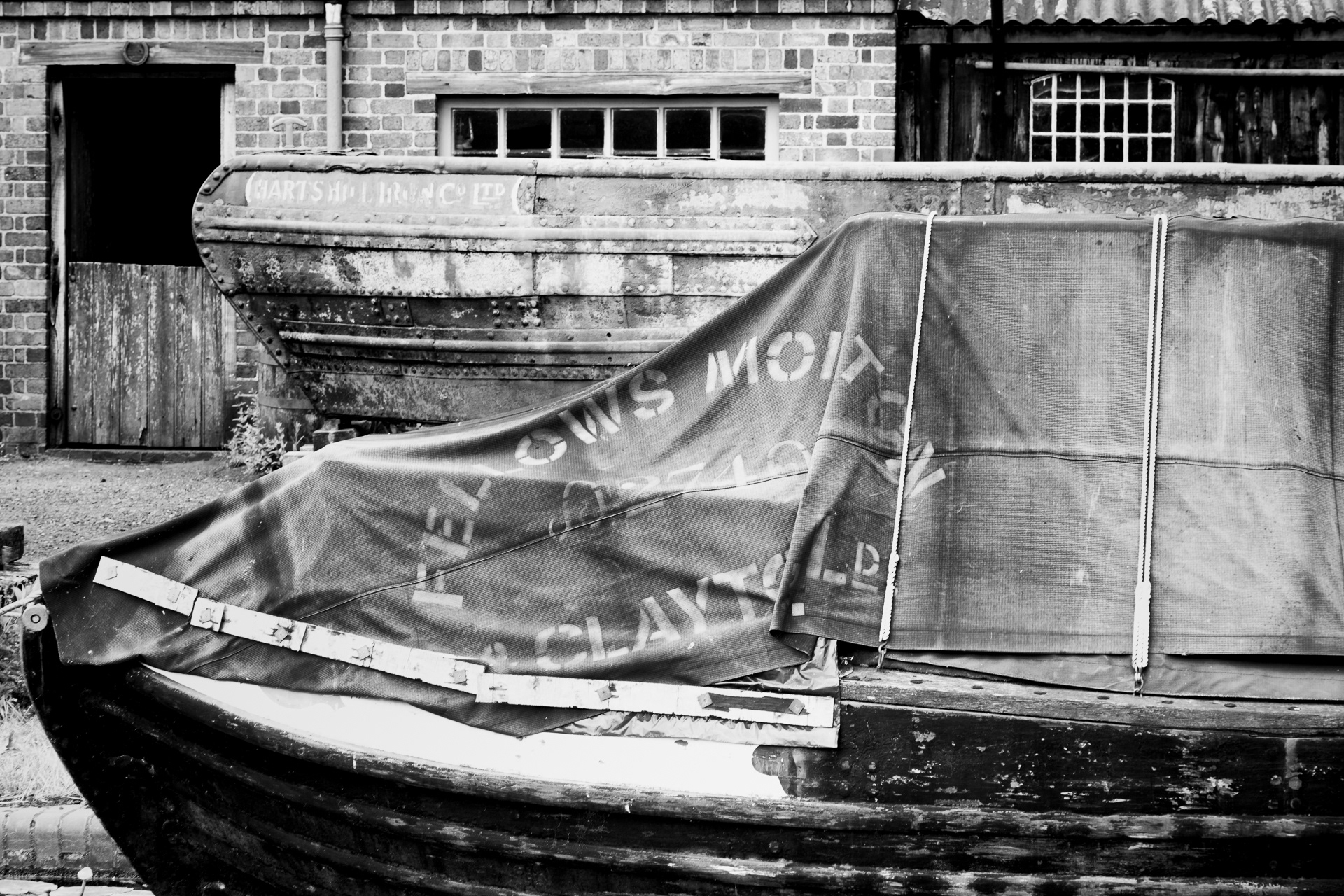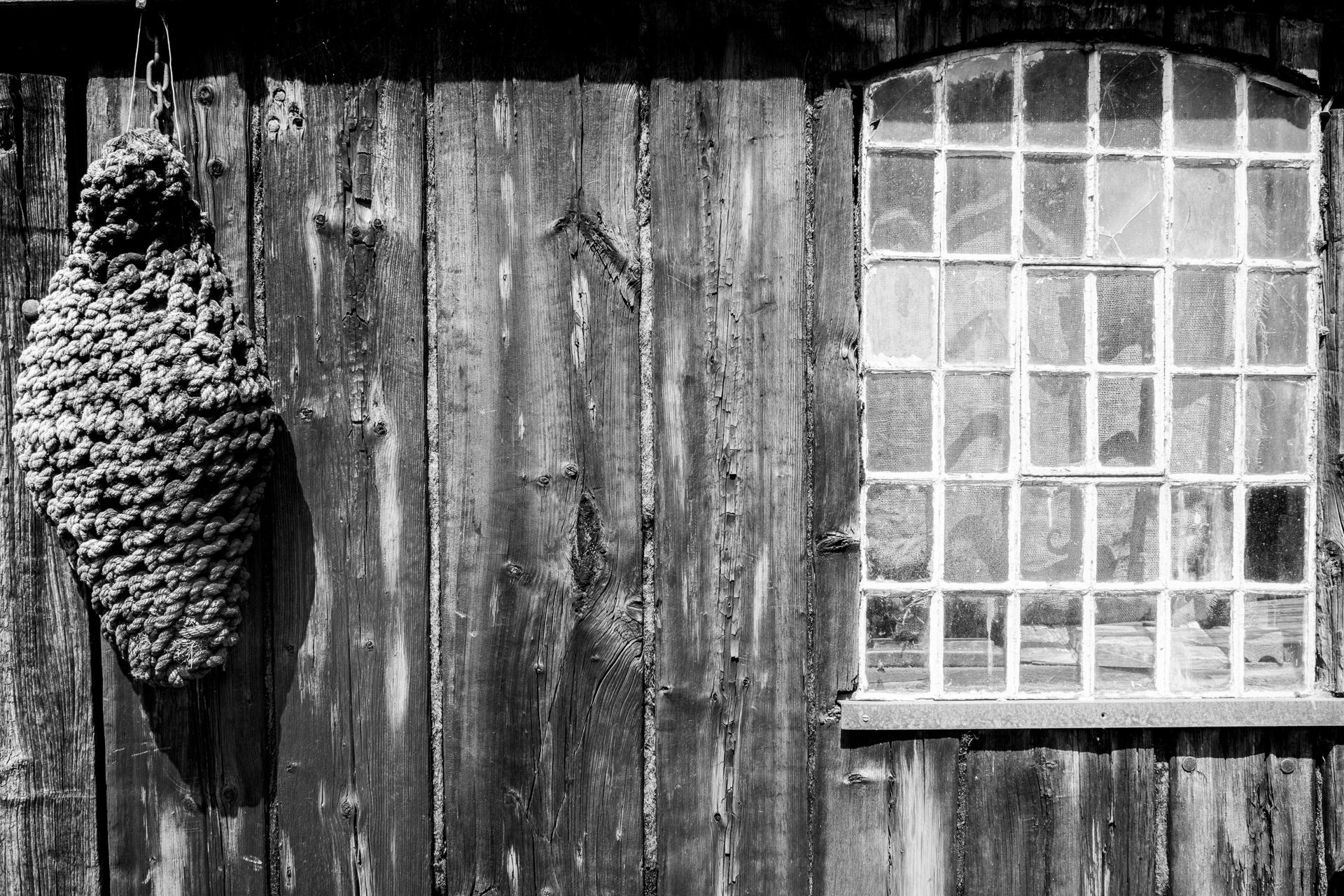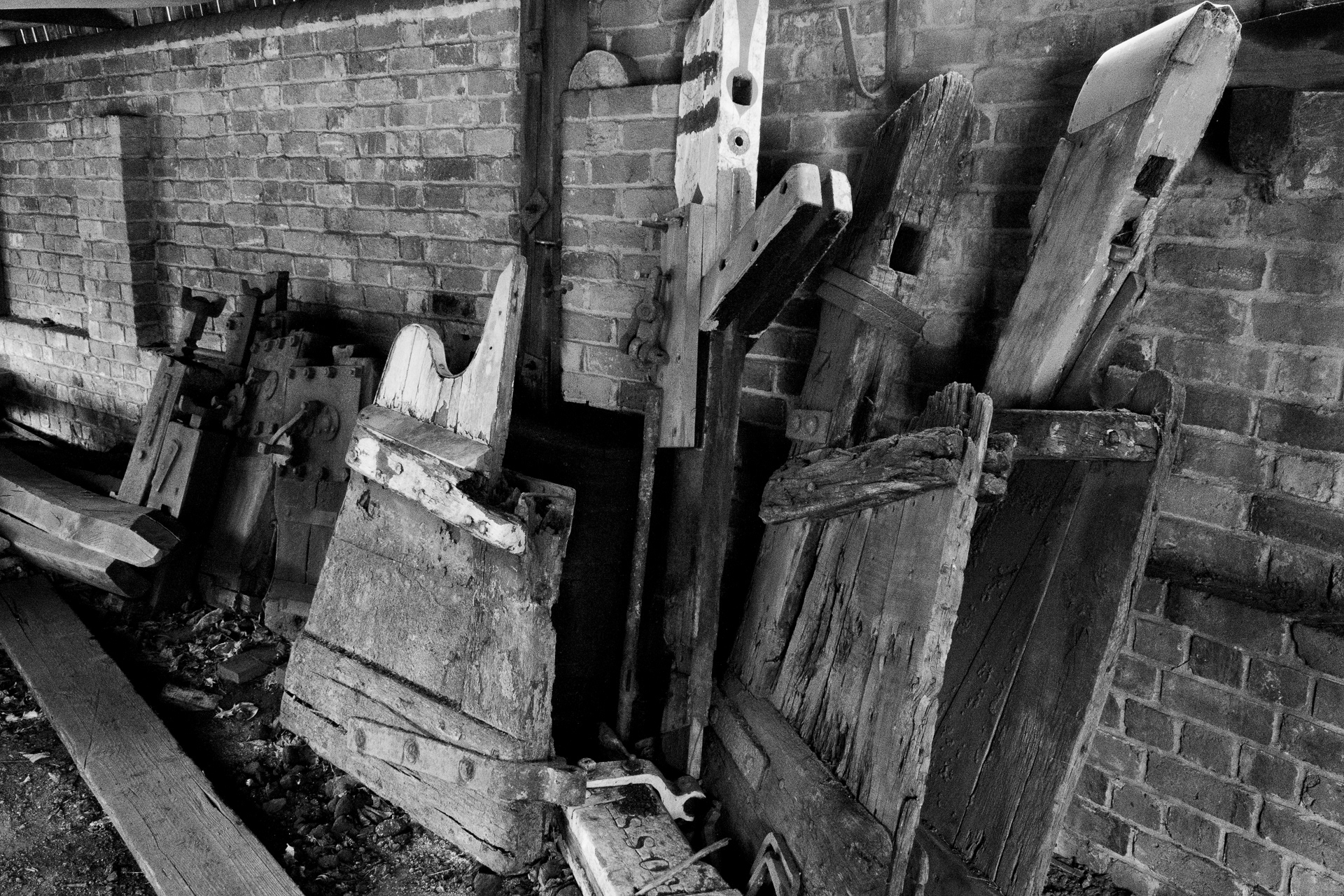I've wanted to work on a series focussed on canals for some time, but with the emphasis very much on a visual exploration of their industrial heritage. These first images were taken at the Black Country Living Museum, a location steeped in the atmosphere and artefacts of working life along the waterways and more importantly where that heritage has not been totally manicured into an 'experience'.
These scenes are typical of what once would have been commonplace in countless yards and workshops along the canals. Timber buildings weathered by time, machines, now abandoned, and the bulk of a boat that once carried heavy loads through narrow locks and under low bridges. In the centre of the frame is a beautifully complex gearing mechanism—one of many tools that kept the industry moving.
During the height of the Industrial Revolution, the canals were vital infrastructure. They carried raw materials to factories, and finished goods to ports and markets. These waterways were as essential to British industrial growth as the railways that eventually eclipsed them. Every lock, warehouse, and boatyard played a role in that story.
While most canals today serve a very different purpose, traces of that industrial past can still be found—often hidden in plain sight. My aim with this series is to explore those echoes, to document the textures, structures, and spaces that speak of a world that shaped our own but that has largely disappeared.




